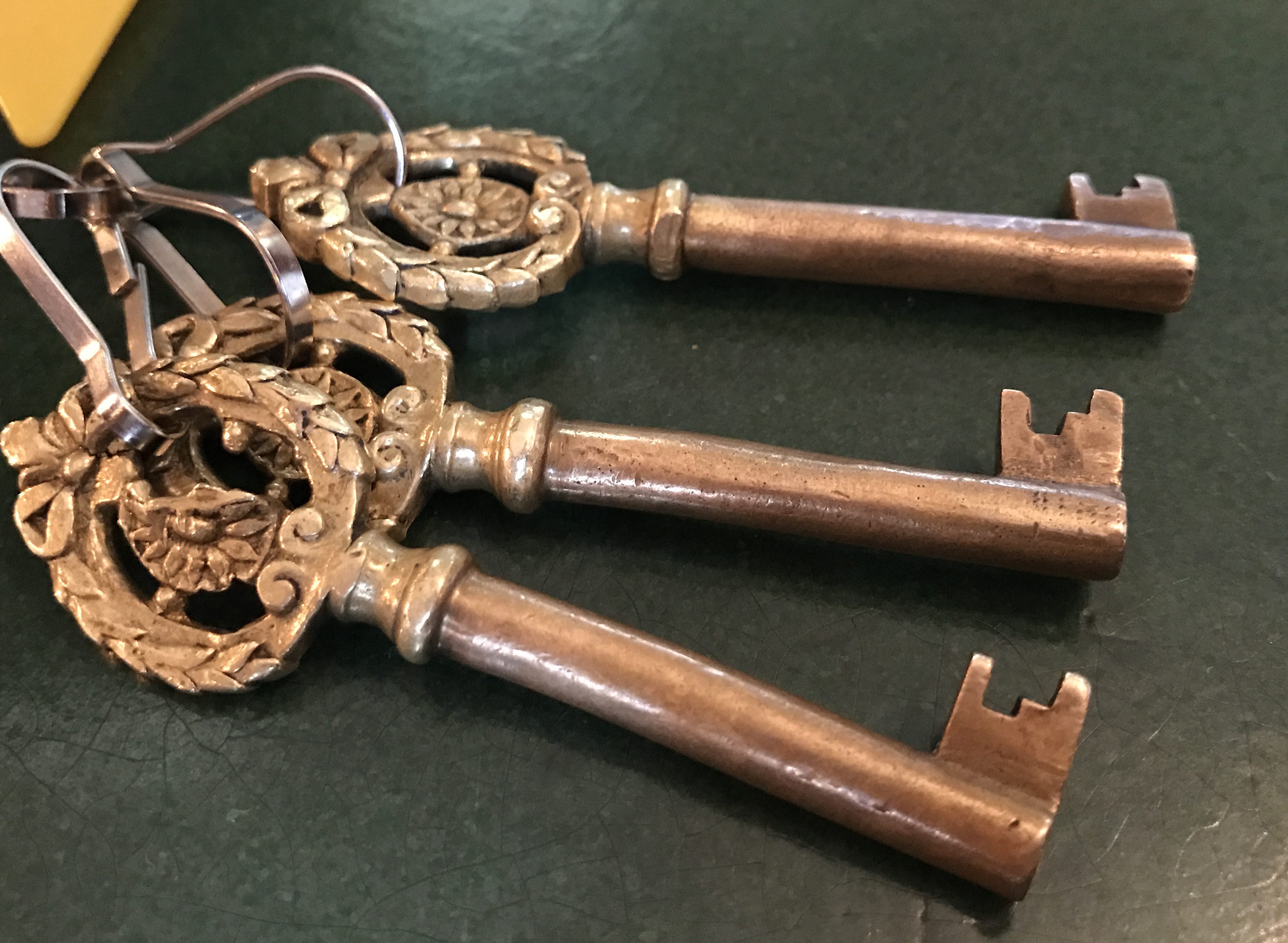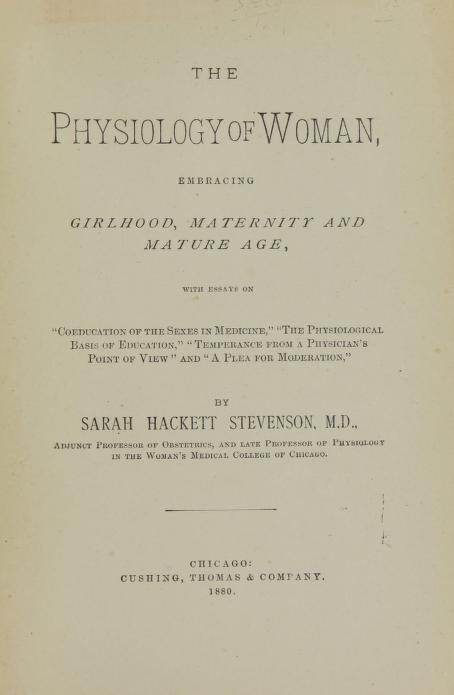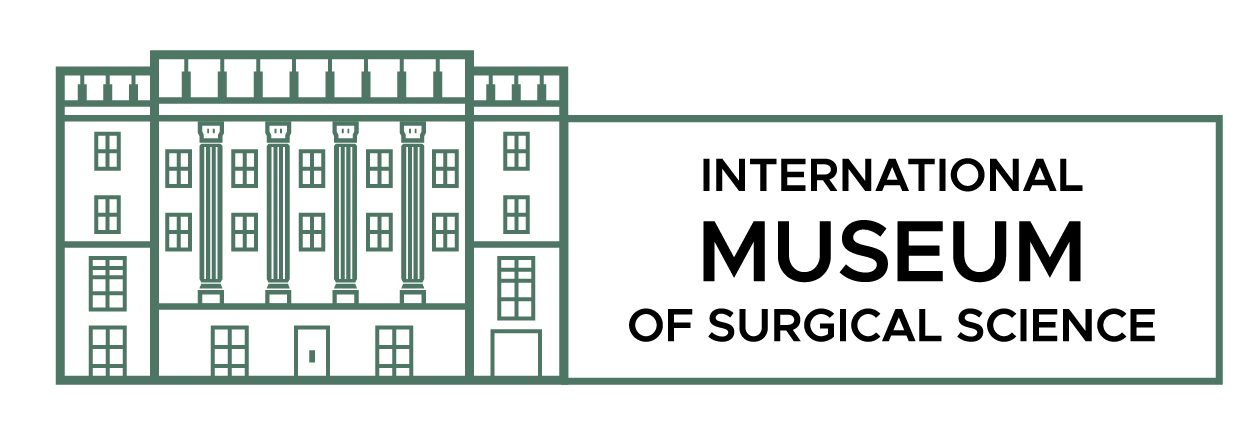Published by Carrie Olivia Adams.
I love the look I receive whenever I have the chance to tell someone that I am the current artist-in-residence at the International Museum of Surgical Science. It’s askance. It’s curious. It’s Huh? Though many are surprised at the existence of the Museum in our city (How esoteric! How macabre!), many more others wonder—But what is a poet supposed to do there? To this, I ask, but what does a poet do anywhere? I am a rummager, a researcher, an alley-cruising scrap-metal collector, an excavator, an archaeologist, a watchful spy, a page-turner, and a note-taker.
My poems often originate in these serendipitous sources—overheard conversation, lost and found text, photographs and illustrations stumbled upon and turned to itches in the mind. My third and most recent book, “Operating Theater,” began after I discovered boxes of medical teaching slides at an industrial antique store. The slides showed cross-sections of brains and x-rays of lungs and were intended to teach the diagnosis of cancers and tumors. But I saw them and immediately saw something else as well—an unsettling irony. These were intimate pictures of strangers, depicting their most hidden and private selves. And yet, if that had been your lung, the folds of your mind, would you have recognized them as your own? They were at once the most personal and the most impersonal images I had ever seen. I knew then that I wanted these radiographs to be a part of the visual component of my book, and then the next question was the text itself. For this, I then turned to works such as “A Manual of Operative Surgery” by Sir Frederick Treves (1909), “The Functions of the Brain” by David Ferrier (1876), and “A Manual of Surgical Treatment” by Sir William Watson Cheyne (1912) in order to begin to piece together the body, investigating as I wrote, borrowing and remaking. And the more I read, the more I found myself surrendering my curiosity to medical history, delighting in its balance between the visceral and the theoretical, between societal service and investigation, a tension I saw echoed in my own work.

It’s a path that has led me here—to the Museum’s beautiful library where I am at residency for the next several months. Granted golden keys of access, I can be curious at will. I listen to the books whisper to each other on the shelves. I judge them by their covers, their spines, their titles, their age, and choose to sit with them. For a researcher, the library is a bit of a madness—cataloging the collection is currently in progress, as is archiving, with many books wrapped up in beautiful white packages, but unknown and untouched by me—yet. They are, of course, the ones I most want to open.
Yet, I have come to believe that in art—and in life—the beauty, the purpose is in the process, not the product. And so I have surrendered to a detective mission that relies as much on chance as on the skill of following the clues. I have my hopes of what I would like to find, chasing after the specters of pioneering women and the medical worlds they encountered and conquered, in particular, Mary Harris Thompson (1829–95), founder of the Chicago Hospital for Women and Children and the Woman’s Hospital Medical College; Sarah Hackett Stevenson (1841–1909), graduate of the College and the first female member of the AMA; and Alice Magaw (1860–1928), graduate of the College’s sister nursing school and nicknamed the “mother of anesthesia,” her portrait hangs in the Museum. Of course, the information I uncover about them is as notable as the books of the time that ignore their existence as women in the field.

So far, what has struck me most is how much the medical books for women during that era read much more like lifestyle guides or etiquette books than actual guides to health. In the decades immediately after the Civil War, the idea of preventive medicine—as compared to responsive medical treatment—grew significantly, and medicine’s connection with societal wellbeing became more intertwined. This, of course, is a good thing, but with it came a lot of advice, well meaning in its prescription, but not always—um—thoughtfully contextualized. A personal favorite example from Dr. Pye Henry Chavasse (1888): “If ladies would walk more than they do, there would be fewer lackadaisical, useless, complaining wives than there at present are.”
Enter a societal catch-22: Women were considered much too delicate and of too sensitive a nature to be able to handle the rigors and visceral nature of the dissection lab, surgical theater, and the daily drama of life and death. But, at the same time, women were idealized as such pure and modest creatures that it is completely immoral that they should have to be subjected to humiliating physical exams by male doctors.
Thankfully, there were women who knew they had the strength of will, intelligence, skill, and the bedside manner to put an end to this contradiction. Nationally, Elizabeth Blackwell (1821-1910) is best known as a medical pioneer and the first woman to receive a medical degree in the United States (in 1849 from Geneva Medical College), but Chicago had its own revolutionaries, led by Thompson and soon followed by Stevenson. During my time at the Museum, I hope to create a multi-faceted portrait of their lives and practice, while also illustrating the time in which they worked and what was known (and not known) in medicine, by drawing on their texts and the words of others and suturing them into a lyrical frame, held together by my own threads.
For now, I offer some thoughts from Stevenson herself, some of which seems oddly contemporary, some woes not having changed so much:
“‘Nature’s doctor’ [is] employment. . . . The gospel of work is full of cure for a large majority of invalid women. Occupation is a prescription I have often tried with great success. . . . No doubt many a woman is suffering from the other extreme—no rest. And it is from these two extremes of society that the majority of chronic invalid women come from—these who have no work and those who have all work.”
“Ignorance is innocence, is undoubtedly the prevailing sentiment among women concerning themselves, and even the penalty which ignorance invariably exacts of woman, does not always open her eyes because she is taught that it is not only her duty, but her blessed and peculiar privilege to suffer.”
“Had this been a women’s case, no one would have failed to label it hysteria. . . . When these diseases attack men they are called by their proper names and treated as diseases and not as reflex actions of the sexual organs; whereas, the same affections in women are referred immediately to the uterus and ovaries.”
“It is a common saying among physicians that man has more strength, woman more endurance.”
“Even the most plausibly constructed tables show that on the whole, the viability or power to live is greater in the female than in the male. Not all the evils of society and perils of childbirth have been able to affect the balance against woman. It is the power of adaptation to surroundings that has made woman survive in spite of circumstances.”

Carrie Olivia Adams is the Museum’s Spring 2017 Artist in Residence. She is the author of “Operating Theater” (Noctuary Press 2015), “Forty-One Jane Doe’s” (book and companion DVD, Ahsahta 2013), and “Intervening Absence” (Ahsahta 2009) as well as the chapbooks “Grapple” (forthcoming from above/ground press 2017), “Overture in the Key of F” (above/ground press 2013), and “A Useless Window” (Black Ocean 2006).


I would like to add an early Chicago woman doctor to your list – my great grandmother. Dr Henrietta Tucker Tanner was born on March 17, 1876 in Watseka, Illinois. Her father was a farmer but most of his sons went on to become doctors, and so did this daughter. She attended Bennett Medical College (which today is the Medical College at Loyola University in Chicago), but then went to the Texas border to complete her “residency” under one of her doctor brothers who was a doctor in the army. En route and while in Texas, she married a Pennsylvanian name William Tanner. After some time in Texas, they moved to NY and then PA and Dr. Tanner established an ear, nose, and throat practice (including surgery), only to learn that in the meantime Bennett College had had a fire in 1902, and so could not certify her degree to PA. A determined woman, she went back to medical school and this time graduated from Women’s Medical College of Pennsylvania with a second medical degree! She had a long and successful practice until her death on March 9, 1940. We have photos of her graduation from Bennett, her WMCP class photos, her performing surgery and even a photo of Madame Curie when she visited her etc. She was a remarkable woman.